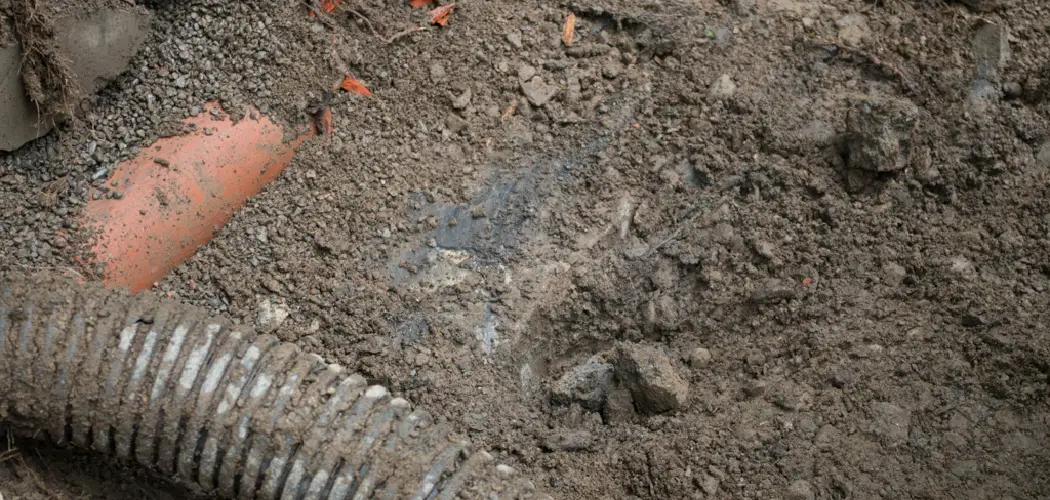Locating a septic drain field is a crucial step for homeowners looking to maintain or troubleshoot their septic systems. Often hidden from sight, the drain field is an essential component of the septic system, responsible for filtering wastewater back into the groundwater.
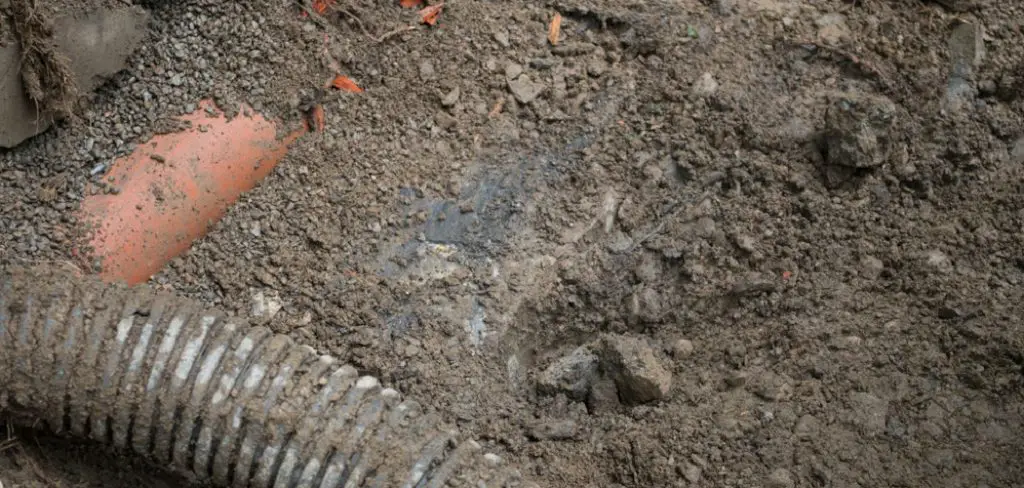
Understanding how to accurately locate this component can save homeowners time and money, preventing potential system failures and ensuring the longevity of their septic system. This guide on how to locate septic drain field will provide step-by-step instructions on how to find your septic drain field, highlighting the importance of this process in septic system maintenance.
What is a Septic Drain Field?
Before we dive into the process of locating a septic drain field, let’s first understand what it is and its role in the septic system. A septic drain field, also known as a leach field or absorption field, is an underground area where wastewater from household plumbing fixtures such as toilets, sinks, and showers is dispersed.
This is the final stage of the septic system, where effluent from the septic tank is filtered and treated by the soil before entering back into the groundwater.
Why Is Knowing Its Location Important?
Knowing the location of your septic drain field is crucial for several reasons. First and foremost, it allows homeowners to avoid building or landscaping over this area, which can lead to damage and potential system failures.
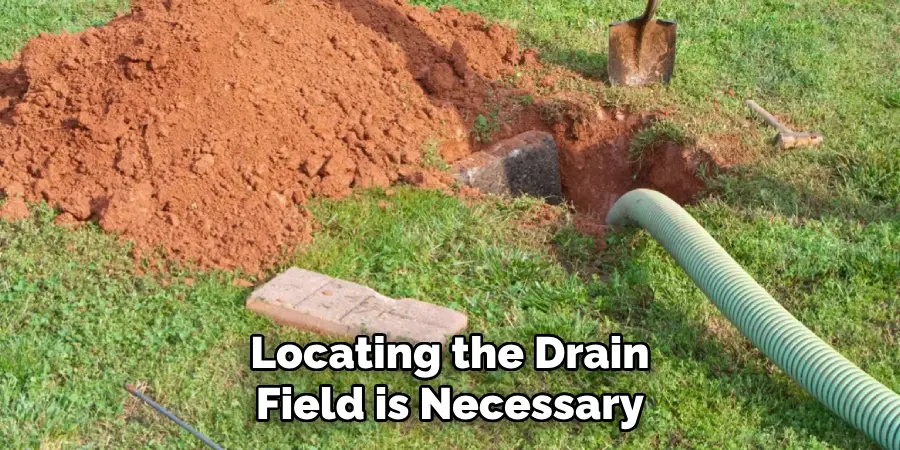
Additionally, locating the drain field is necessary for proper maintenance and troubleshooting. For example, if there are issues with your septic system, knowing where the drain field is can help identify any potential problems in that area.
You’ll Need
A Copy of Your Septic System Layout or Permit
If you’re a new homeowner, it’s essential to obtain a copy of your septic system layout or permit to understand the overall design and location of your drain field. If you don’t have this information readily available, contact your local health department or septic service provider for assistance.
A Probe Rod
A probe rod is a long, slender metal rod used to penetrate the ground and locate the drain field. It can be purchased at a hardware store or borrowed from a neighbor.
A Septic System Map
Having a septic system map on hand will assist in identifying potential locations for your drain field. If you don’t have one, you can create a rough sketch by measuring the distance between your home and the septic tank and estimating the distance to the drain field.
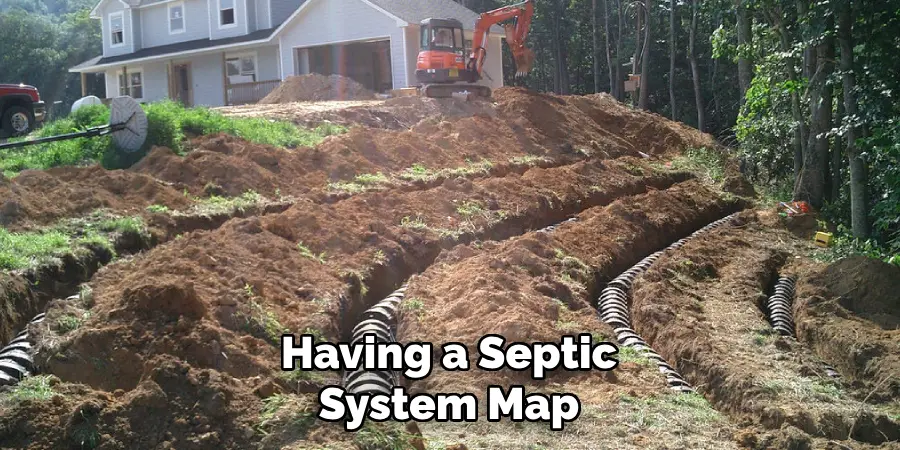
A Helper
While it is possible to locate a septic drain field on your own, having a helper can make the process easier and more efficient. Make sure your helper knows the location of the septic tank and is aware of any potential hazards in the area.
10 Step-by-step Guidelines on How to Locate Septic Drain Field
Step 1: Understanding the Septic System Layout
As mentioned earlier, it is crucial to have a basic understanding of your septic system layout before attempting to locate the drain field. Review the layout or permit and familiarize yourself with the components of the system, including the location of the septic tank and any pipes leading from it.
You can also check the area for any visible signs of the drain field, such as vent pipes or cleanout covers. It’s also helpful to know the age of your septic system, as older systems may have different designs and locations for their drain fields.
Step 2: Check the Perimeter of Your Home
Start by walking around the perimeter of your home and looking for any noticeable dips or changes in soil texture. These could be indications of where pipes are buried and lead to the drain field.
You can also look for any patches of grass that are greener or lusher than the rest, as this could be a sign of where effluent from the drain field is entering the soil. It’s also essential to mark any potential locations on your septic system map. You can also use a probe rod to confirm if there are pipes or distribution boxes buried in these areas. But be careful not to damage any pipes or components.
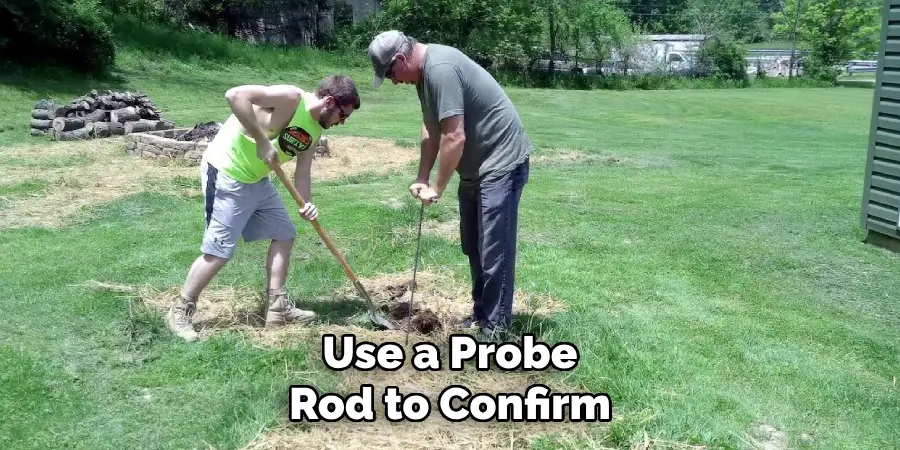
Step 3: Locate the Septic Tank
The septic tank is typically located between 10-25 feet from your home, depending on local regulations and the age of your system. If you have a septic system map, use it to estimate its location. If not, you can follow the sewer line from your home to locate the tank.
You can also use a probe rod to help find it. It’s essential to locate the septic tank as it will give you an idea of where the drain field may be located. The drain field is usually a few feet away from the tank, so keep that in mind when marking potential locations.
Step 4: Follow the Direction of the Sewer Line
Once you’ve located the septic tank, follow the direction of its sewer line. This will give you an idea of where the drain field may be located, as it is usually in a straight line from the septic tank.
Use your probe rod to confirm if there are any pipes or distribution boxes buried along this path. But be cautious as not all septic systems are designed in a straight line. It’s essential to have a general understanding of your system’s layout before proceeding.
Step 5: Check the Topography of Your Yard
The topography or slope of your yard can also give clues to the location of the drain field. Septic drain fields are typically installed on level or slightly sloped areas, so look for any flat or gentle slopes in your yard.
Avoid areas with steep slopes, as these are not suitable for drain field installation. You can also use your probe rod to confirm if there are any pipes buried in these areas. If you find any, mark them on your septic system map. However, keep in mind that older systems may have different designs and locations for their drain fields.
Step 6: Look for Any Manhole Covers or Inspection Ports
Some septic systems may have manhole covers or inspection ports along the sewer line leading to the drain field. These are usually visible and can help you locate the direction of the pipes leading to the drain field.
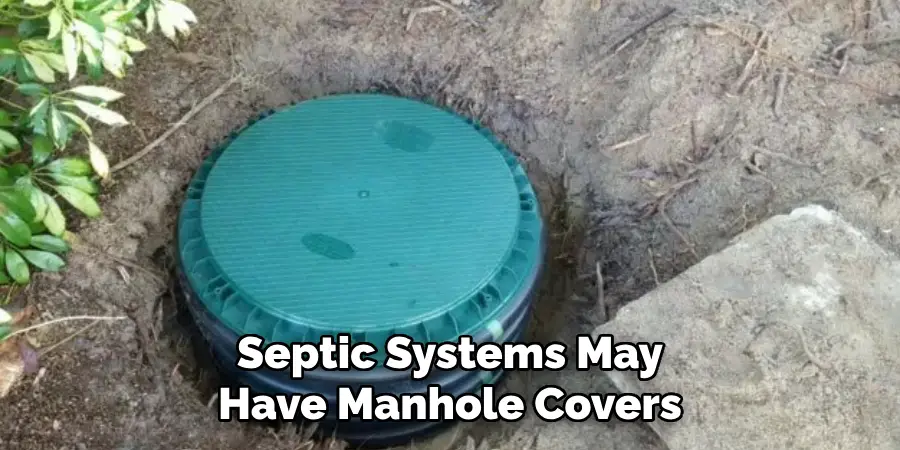
Check your septic system map or speak with a local health department or septic service provider to determine if your system has any manhole covers or inspection ports. The use of a probe rod can also help confirm if there are any pipes or distribution boxes buried in these areas. It’s essential to be cautious and not damage any components while locating them.
Step 7: Look for Any Indications on Your Lawn
As mentioned earlier, patches of grass that are greener or lusher than the rest can be an indication of where effluent from the drain field is entering the soil. However, this may not always be the case, so it’s essential to use other methods to confirm the location.
Other signs to look for include depressions in your yard, particularly around the perimeter of your home. These could be indications of trenches dug during installation or repairs of the drain field. It’s also crucial to mark these potential locations on your septic system map. The use of a probe rod can also help confirm if there are any pipes or distribution boxes buried in these areas.
Step 8: Refer to Your Septic System Map
If you haven’t already, refer to your septic system map and mark any potential locations of the drain field. Use all the information gathered in previous steps to determine if these are accurate.
If not, make necessary adjustments or add new potential locations. It’s essential to have an updated and accurate septic system map for future reference. It will also be helpful if you need to call a professional for repairs or maintenance. You can also make a copy of the map and keep it in a safe place for future use.
Step 9: Use a Professional Locator
If you’re having trouble locating your septic drain field, it may be best to hire a professional locator. They have the experience and equipment necessary to accurately locate underground components of your septic system.
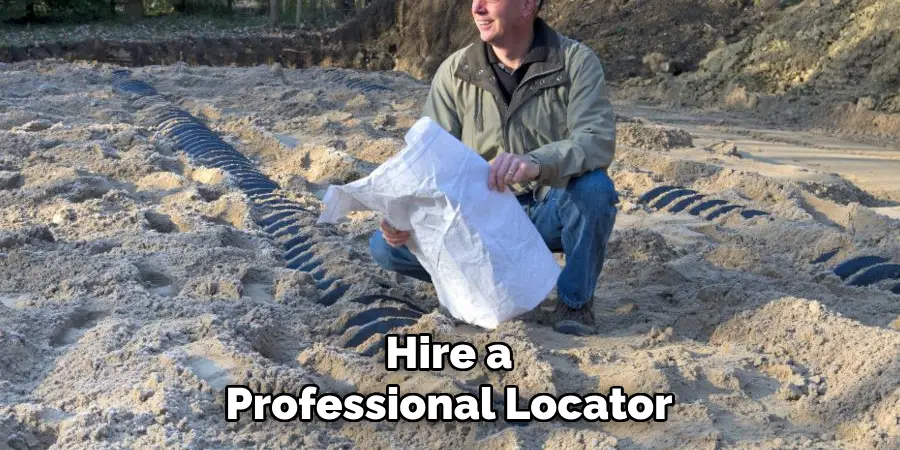
A professional locator can also provide valuable information and tips on maintaining your septic system properly. It’s essential to hire a reputable and licensed professional for the job, as they will carry out the task safely and efficiently. It may cost a bit more, but it will save you time and potential damage to your septic system in the long run.
Step 10: Maintaining Your Septic System
Once you have located your septic drain field, it’s crucial to understand the importance of maintaining your septic system. Proper maintenance can extend the life of your system and prevent costly repairs or replacements.
It’s recommended to have your septic system inspected every 3-5 years by a professional and pumped every 3-7 years, depending on the size of your household. Also, avoid putting harmful substances down the drain, such as grease, oil, chemicals, and non-biodegradable items.
Following these guidelines on how to locate septic drain field will help keep your septic system functioning properly for years to come. Additionally, it’s essential to conserve water and avoid overloading your system with excessive water usage.
This can cause the drain field to become saturated and fail, leading to costly repairs. By following proper maintenance techniques and being mindful of what goes into your septic system, you can ensure its longevity and avoid any major issues.
Consulting with Septic System Professionals
If you’re having trouble locating your septic drain field or if you’re unfamiliar with septic systems, it’s always best to consult with professionals. They have the knowledge and experience to accurately locate and maintain your system.
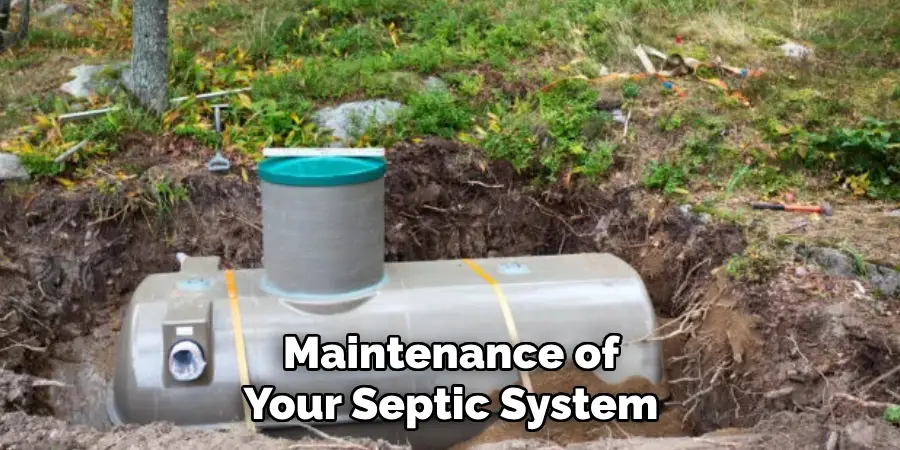
Additionally, they can provide valuable information on the proper usage and maintenance of your septic system. Don’t hesitate to reach out to a licensed professional for assistance and guidance. Remember, proper maintenance and care of your septic system is crucial for both your health and the environment.
Using Electronic Locator Devices
In some cases, traditional methods of locating septic drain fields may not be effective. This is where electronic locator devices can come in handy. These devices use electromagnetic signals to locate underground components of your septic system, including pipes and distribution boxes.
However, they can be expensive and require a skilled operator to use them correctly. It’s essential to hire a professional with proper training and experience before attempting to use an electronic locator device.
Conducting Dye Tests or Septic Inspections
If all else fails, you may need to conduct a dye test or have a professional perform a septic inspection. Dye tests involve injecting a colored dye into your system and monitoring where it appears in your yard. This can help pinpoint the location of the drain field.
Septic inspections involve using specialized equipment to locate underground components and determine the condition of your system. These methods may be more costly, but they can provide accurate results when traditional methods are not effective. Remember to always hire a licensed and reputable professional for these tasks.
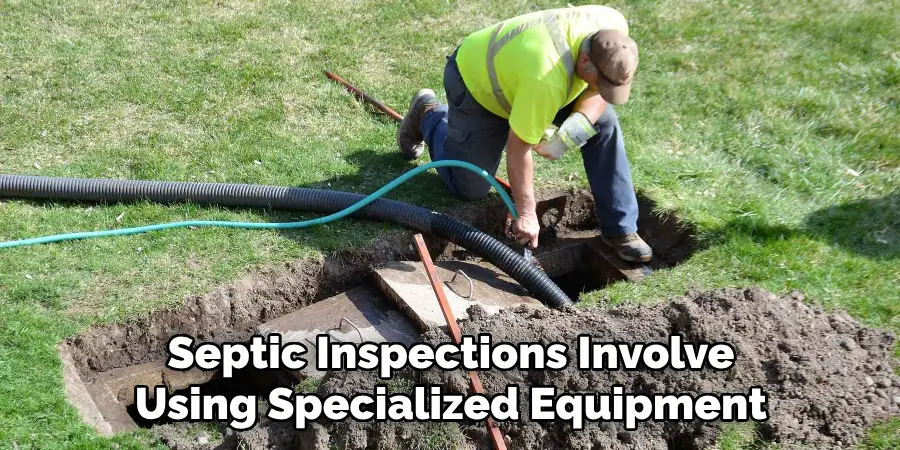
Documenting and Marking the Drain Field Location
Once you have successfully located your septic drain field, it’s crucial to document and mark its exact location. This will save you time and effort in the future when conducting maintenance or repairs. You can use permanent markers or flags to indicate the boundaries of your drain field, as well as any pipes or distribution boxes found within the area.
Additionally, make sure to add this information to your septic system map for future reference. Having an accurate and up-to-date map will make it easier to locate your drain field in the future. Overall, taking the time to properly document and mark the location of your septic drain field can save you from potential headaches and costly repairs down the road. So, be sure to keep this information easily accessible and updated.
Safety Considerations and Environmental Protection
When locating your septic drain field, it’s crucial to keep safety in mind. Avoid digging or probing without proper equipment and knowledge, as this can lead to injury or damage to your system. It’s also essential to be aware of the potential environmental impacts of your septic system.
Make sure to dispose of any chemicals properly and avoid putting harmful substances down the drain. With proper maintenance and care, your septic system can function efficiently while protecting the environment. Remember to always consult with professionals and follow safety guidelines when dealing with septic systems.
Frequently Asked Questions
Q: How Often Should I Have My Septic System Inspected?
A: It’s recommended to have your septic system inspected every 3-5 years by a professional. The frequency may vary depending on the size of your household and septic system usage. You can also consult with a professional for personalized recommendations. It’s also important to keep an eye out for any warning signs of potential issues, such as strange odors or slow drainage.
Q: Can I Locate My Septic Drain Field Without Professional Help?
A: In some cases, it may be possible to locate your septic drain field without professional help. However, it’s always best to consult with professionals who have the knowledge and experience to accurately locate and maintain your system. This will ensure the safety and longevity of your septic system.
Q: What Should I Avoid Putting Down My Drain to Prevent Damage to My Septic System?
A: To prevent damage to your septic system, it’s essential to avoid putting harmful substances down the drain. This includes grease, oil, chemicals, and non-biodegradable items such as diapers and paper towels. These substances can clog your system and lead to costly repairs. Throwing away these items in the trash instead of flushing them down the drain is a simple way to protect your system.
Q: How Can I Conserve Water and Avoid Overloading My Septic System?
A: To conserve water and avoid overloading your septic system, it’s crucial to be mindful of excessive water usage. This includes avoiding long showers, fixing any leaks promptly, and spreading out laundry loads throughout the week. Additionally, using water-saving appliances and fixtures can also help reduce water usage and prevent overloading your system.
Q: What Are Some Warning Signs That My Septic System May Need Maintenance or Repairs?
A: Some warning signs that your septic system may need maintenance or repairs include strange odors, slow drainage, and sewage backups. These issues may indicate a clogged or failing system and should be addressed promptly by a professional. Regular inspections and proper maintenance can also help prevent these problems from occurring.
Conclusion
In conclusion, accurately locating your septic drain field is not only crucial for effective maintenance and troubleshooting but also ensures the environmental integrity and functionality of your home’s wastewater management system. By following the step-by-step guide provided, homeowners can avoid costly repairs and system failures, contributing to a healthier environment and sustaining the efficiency of their septic system.
Remember, when in doubt, consulting with a professional septic service can provide further assistance and peace of mind. Thanks for reading this article on how to locate septic drain field.

